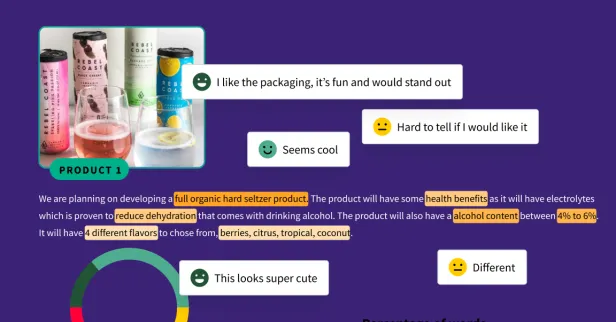This Valentine’s Day, love isn’t just in the air—it’s in the choices consumers make. As shoppers look for meaningful ways to express their affection, many are turning to lab-grown diamonds, a reflection of the broader shift toward sustainability, transparency, and value-driven purchasing. More than ever, consumers want their gifts to align with their personal values, making lab-grown diamonds a symbol of both love and responsibility.
Evolving Consumer Preferences and Values
The growing acceptance of lab-grown diamonds signifies a fundamental shift in consumer priorities. Younger generations, particularly Millennials and Gen Z, are leading this change. According to a 2023 report by The Knot, nearly 36% of engagement rings now feature a lab-grown diamond, up from just 16% in 2020. Additionally, a study by MVI Marketing found that 70% of Millennials would consider a lab-grown diamond for an engagement ring, citing sustainability and affordability as key factors.
This demand for ethically sourced products is driving brands to rethink their offerings and marketing strategies. Companies like Brilliant Earth, VRAI, Lightbox Jewelry (De Beers' lab-grown diamond brand), Diamond Foundry, and Karia Diamonds are at the forefront, positioning themselves as leaders in the space. Understanding these shifting values is crucial for businesses that want to stay relevant and foster deeper consumer connections—especially during occasions like Valentine’s Day, when sentimentality and meaning are paramount.
Bridging Perception Gaps with Research
Despite the increasing popularity of lab-grown diamonds, perception gaps persist. Some consumers still question their authenticity and long-term value. While a 2024 Statista report found that lab-grown diamonds account for 10% of the total diamond market, the resale market remains a concern for some buyers. Addressing these concerns requires data-driven insights into consumer sentiment.
By leveraging consumer research, brands can uncover nuanced opinions and tailor their education and marketing strategies to bridge these gaps. Companies like VRAI and Diamond Foundry emphasize their zero-carbon footprint, while Lightbox Jewelry focuses on affordability and transparency in pricing. These approaches help foster greater acceptance and trust—ensuring that a Valentine’s Day gift shines as brightly in the mind as it does in reality.
Customization of Messaging Through Data
Not all consumers are drawn to lab-grown diamonds for the same reasons. Some prioritize environmental impact, others focus on affordability, and some are simply looking for high-quality alternatives to mined diamonds. Research by Tenoris found that 60% of Gen Z consumers say sustainability influences their purchasing decisions, making this an especially relevant selling point for lab-grown diamonds.
During a season centered around personal connection, businesses that can segment their audiences effectively and deliver personalized messaging will have the greatest success in engaging consumers. Brilliant Earth, for example, highlights its commitment to ethically sourced diamonds, while Pandora recently shifted its entire diamond collection to lab-grown stones, responding to growing consumer demand for sustainable luxury. By leveraging data-driven insights, brands can craft compelling narratives that resonate with specific consumer groups, ensuring every Valentine’s Day gift feels as special as the love it represents.
Future of Ethical Consumerism
Lab-grown diamonds are just one example of the larger trend toward ethical consumerism. Consumers are increasingly seeking brands that demonstrate a commitment to sustainability, transparency, and ethical practices. According to a McKinsey report on the future of luxury, two-thirds of consumers now consider sustainability when making a purchase, and this trend is expected to grow across all luxury categories.
Companies that proactively monitor consumer sentiment and anticipate these evolving values will be better positioned to lead the market. As this trend continues, businesses that invest in ongoing research and adaptive strategies will build stronger customer relationships and long-term brand loyalty—helping consumers feel good about the gifts they give and receive on Valentine’s Day and beyond.
Trust and Transparency in Consumer Research
Trust is the foundation of consumer adoption. Transparency in sourcing, production, and marketing is critical in addressing skepticism and fostering confidence in lab-grown diamonds. Brands that actively listen to consumer concerns and address them with clear, data-backed messaging will set themselves apart in an increasingly competitive market.
Companies like Diamond Foundry and VRAI are leading the charge in transparency by offering carbon-neutral diamonds with verifiable origins. Meanwhile, Lightbox Jewelry provides straightforward pricing, helping to eliminate confusion in the market. By leveraging authentic consumer insights, brands can make informed decisions that align with consumer expectations—making sure that every diamond, lab-grown or not, becomes a meaningful token of love.
Conclusion
This Valentine’s Day, as people search for gifts that reflect their deepest emotions, lab-grown diamonds present an opportunity to celebrate love in a way that’s as responsible as it is beautiful. With the backing of sustainability-conscious brands, growing consumer acceptance, and data-driven insights, the industry is poised for continued growth. By embracing transparency, personalization, and ethical consumerism, brands can help ensure that love, in all its forms, truly lasts forever.
